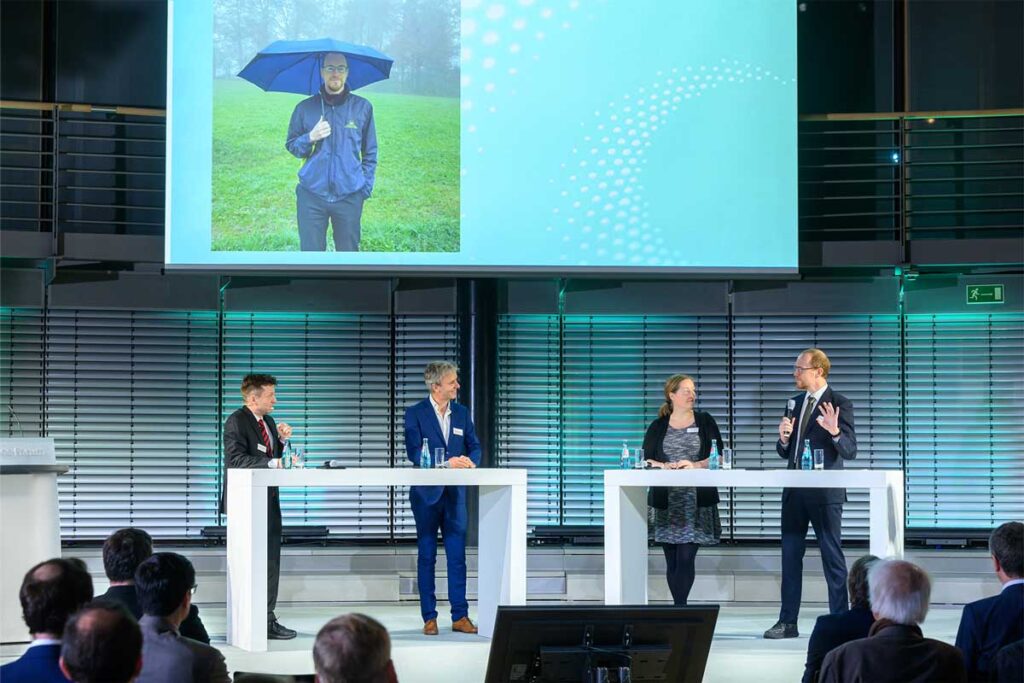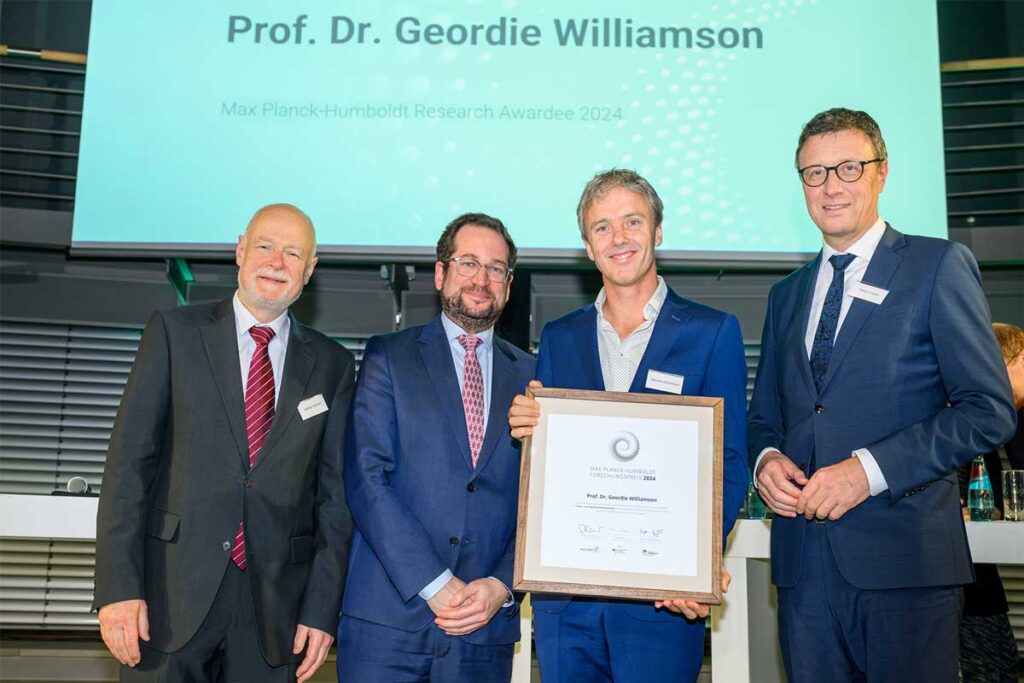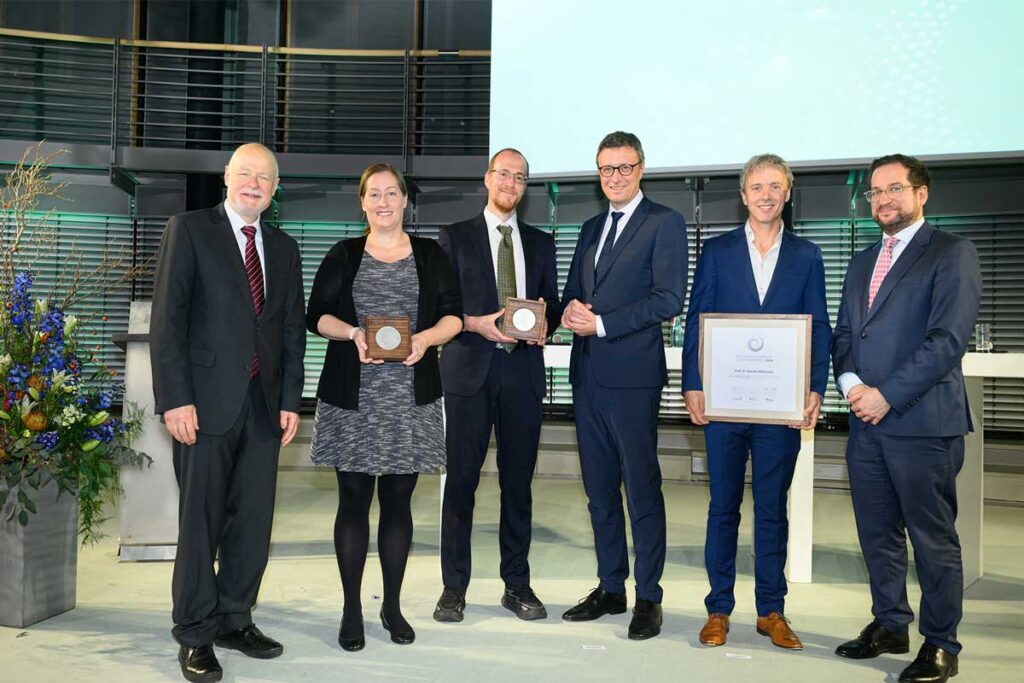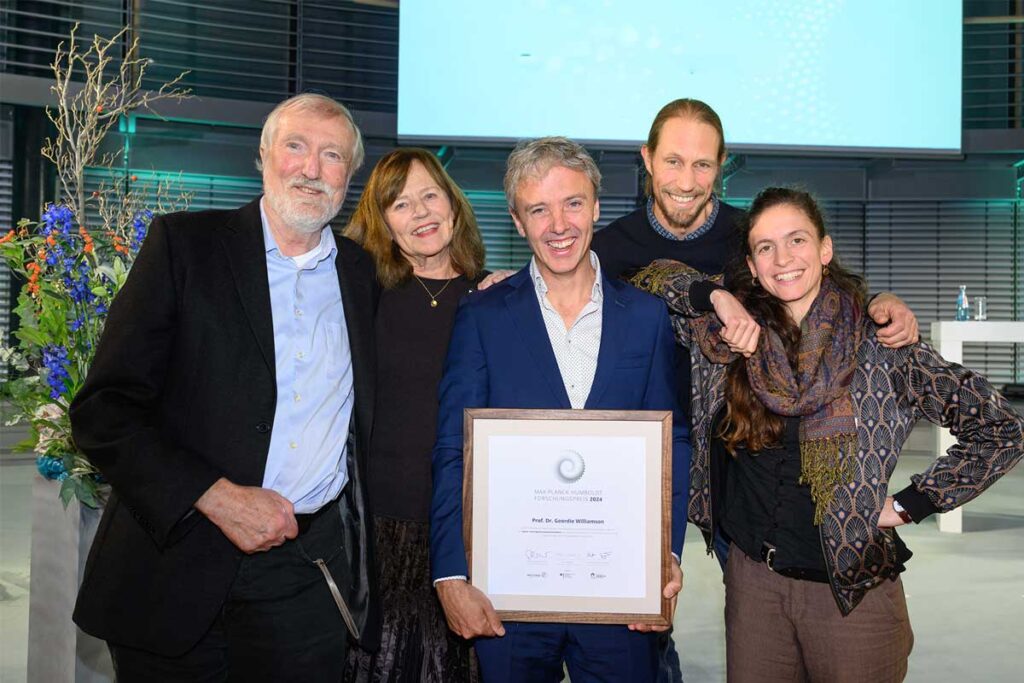



Congratulations to SMRI director Geordie Williamson who was awarded the 2024 Max Planck-Humboldt Research Award. This prize is awarded by the Max Planck Society and the Alexander von Humboldt Foundation and recognizes researchers with outstanding potential for the future. The prize, endowed with 1.5 million euros, is intended to attract particularly innovative scientists working abroad to spend a fixed period of time at a German higher education institution or research facility. The focus of the award alternates each year between natural and engineering sciences, life sciences, humanities and social sciences.
Scientists today use artificial intelligence in many areas, especially in the natural sciences, for tasks such as analysing data or images. In theoretical mathematics, on the other hand, AI has barely been used thus far. Now Geordie Williamson is aiming to change that. In his previous work he has already used artificial neural networks, which can guide mathematical intuition by drawing attention to previously unrecognised relationships in a large number of mathematical objects. Artificial intelligence can also help to generate examples or counterexamples that prove or disprove mathematical assumptions. Although artificial neural networks can recognise patterns in large data sets very efficiently and effectively, they know nothing about mathematics. It therefore remains the task of mathematicians to filter out the sensible proposals from AI, to interpret them and, in the case of new assumptions about mathematical relationships, to prove or disprove them. Geordie Williamson wants to optimise the possibilities of using AI in theoretical mathematics in the collaboration made possible by the Max Planck-Humboldt Research Award. To this end, he will work closely with researchers from the University of Bonn and the Max Planck Institute for Mathematics in Bonn, where he will also spend two periods of several months each.
Connecting the countable with geometry
Geordie Williamson’s previous research work was characterised by the fact that he brought together different fields such as combinatorics and geometry. In simple terms, combinatorics can be understood as the branch of mathematics that is dedicated to everything that can be counted; it includes subjects such as graph theory and discrete mathematics. Geometry is about objects in spaces, i.e. straight lines, surfaces, and solids, just like in school maths. Both sub-areas come together in a simple example when the intersection points of a curve and a surface are to be counted. Geordie Williamson has now opened up ways of solving combinatorics problems with geometric tools, for which purpose he first had to develop a kind of common mathematical language for the two fields so that combinatorial problems could be worked on in geometry, but geometry could also be translated into combinatorics. With this approach, Geordie Williamson has proved or disproved various mathematical assumptions.
Solving knot theory problems with the help of AI
As part of the collaboration with researchers from the University of Bonn and the Max Planck Institute for Mathematics, Williamson will tackle various mathematical problems with the help of artificial intelligence. Amongst the problems that they will tackle is a problem in knot theory. In simple terms, this can be explained by the fact that it is often impossible to recognise whether knotted structures, such as in a string, are actually knotted: does the knot remain intact when you pull on the ends of the cord or does it unravel? One aim of the project is to identify these cases in a simple way so that these uninteresting cases can be quickly filtered out and the researchers can focus on the real knots. AI is set to provide support here and assistance in gaining new mathematical insights.